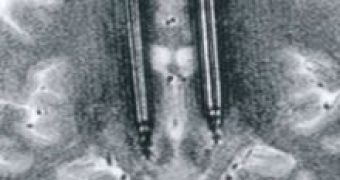One of the great challenges for treating Parkinson's diseases and other neurodegenerative disorders is getting medicine to the right place in the brain.
The brain is a complex organ with many different types of cells and structures, and it is fortified with a protective barrier erected by blood vessels and glial cells, the brain's structural building blocks, which effectively blocks the delivery of most drugs from the bloodstream.
But now scientists have found a new way to sneak drugs past the blood-brain barrier by engineering and implanting progenitor brain cells derived from stem cells to produce and deliver a critical growth factor that has already shown clinical promise for treating Parkinson's disease.
The Wisconsin team, led by neuroscientist Clive Svendsen, obtained and grew large numbers of progenitor cells from human fetal brain tissue.
They then engineered the cells to produce a growth factor known as glial cell line-derived neurotrophic factor (GDNF).
In some small but promising clinical trials, GDNF showed a marked ability to provide relief from the debilitating symptoms of Parkinson's. But the drug, which is expensive and hard to obtain, had to be pumped directly into the brains of Parkinson's patients for it to work, as it is unable to cross the blood-brain barrier.
In an effort to develop a less invasive strategy to effectively deliver the drug to the brain, Svendsen's team implanted the GDNF secreting cells into the brains of rats and elderly primates. The cells migrated within critical areas of the brain and produced the growth factor in quantities sufficient for improving the survival and function of the defective cells at the root of Parkinson's.
"This work shows that stem cells can be used as drug delivery vehicles in the brain," says Svendsen, a professor of anatomy whose laboratory is at the UW-Madison Waisman Center.

 14 DAY TRIAL //
14 DAY TRIAL //